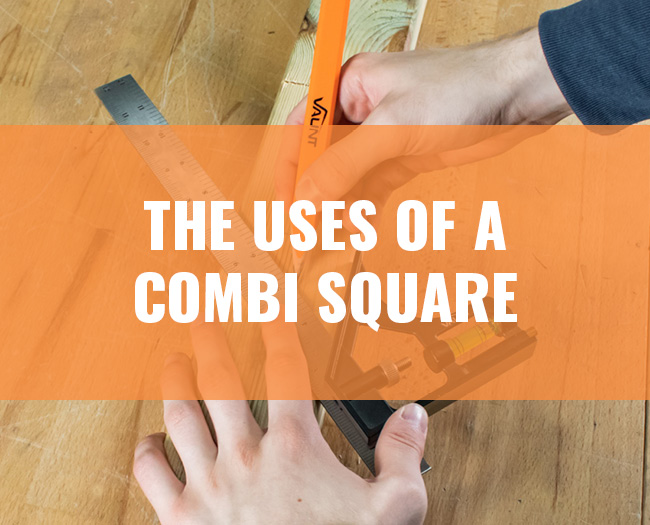What can a combination square do?
The combination square has an undeserved bad reputation these days. Some people seem to think they are totally inaccurate but then it is these same people who spend as little as they can on one and then it spends the rest of its life being bumped around in the back of the van.
The combination square is a precision tool and its numerous benefits make it an invaluable addition to not only a woodworker’s kit but to every tool box from site to home so what else can the humble combination square offer?
Josh Says – For the purposes of this article we will only be focusing on the square head of the combination square to keep things easy to understand.
The Basics
Combination squares come with a variety of different rule lengths to accommodate small jobs such as making sure the blade on your saw is straight and larger jobs such as laying out pieces of joinery as the longer the rule, the easier it is to see if something is not square.
A combination square will also give you a perfect 45° and 90° angle quickly and easily and many combination squares also have a small spirit level in the head, so you can make sure your angles are accurate and your surfaces are level.
In a nutshell, a combination square is a tool that lets you mark out the two most common angles in joinery, it gives you a very accurate rule, and some have a handy spirit level. That’s the basics of it so let’s look at other things you can do with your new combination square.
Forgot Your Pen?
It’s all fine and well being able to measure the proper angles on your workpiece but what if your trusty ear pencil has disappeared? Luckily, the combination square has you covered. Just unscrew the small (in this case) brass cap and inside you will find a handy little scribe.
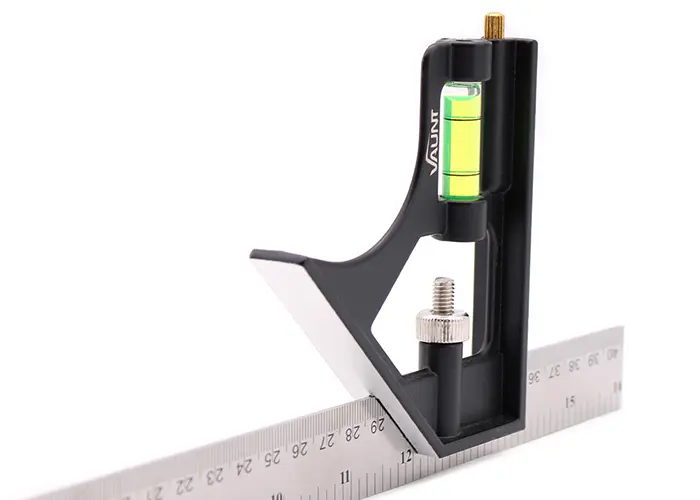
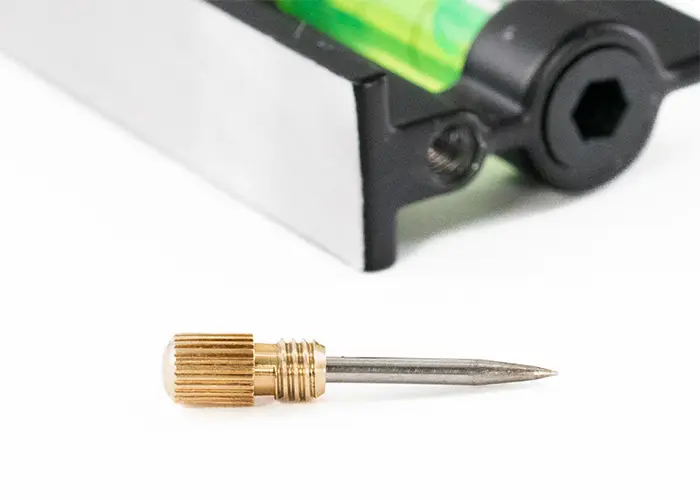
This scribe is typically made from steel and can mark most materials. You may need a dab of engineer’s blue to see the mark on steel, but it will work.
Set your Bevels
You can remove the rule and then use the head to set the bevel on your saw to give you a perfect 45° angle every time. Yes, most modern saws do come with an angle adjustment gauge and you can trust that if you wish however it never hurts to make double sure. Measure twice and all that…
You just put the head against the blade and adjust until they match, it couldn’t be simpler.
Depth Gauge
The combination square makes a fantastic depth gauge with a precision rule and the ability to lock in measurements.
You can quickly and easily measure the depth of a mortice and transfer that measurement to the mating tenon stock and be sure of its accuracy. You can also go one further and measure the depth of a dovetail joint slot and then transfer that measurement to your router table.
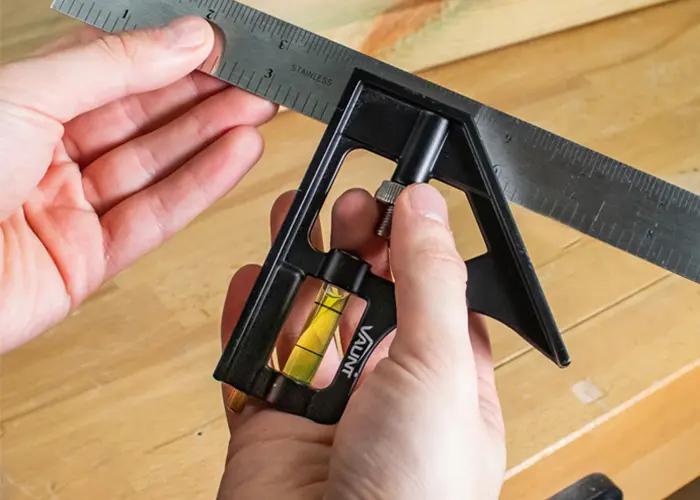
Need a long rule? No problem
Don’t mess around trying to mark two distant endpoints and digging out a straight edge or, even worse, using a messy chalk line to connect them. Just set your combination square so the rule’s end indicates your layout line. You can then hold a sharp pencil in the rules groove and slide the square along the edge of the workpiece to scribe a perfectly straight line.
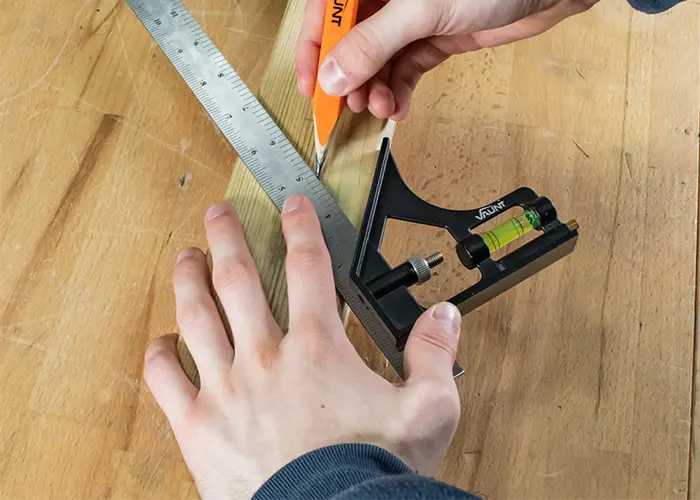
Or just need a rule by itself?
A good combination square will have a precision ground rule that can be removed from the head and used to check your material for flatness or adjust your plane. The clear graduation marks on the squares rule are much more accurate for layout than a tape measure.
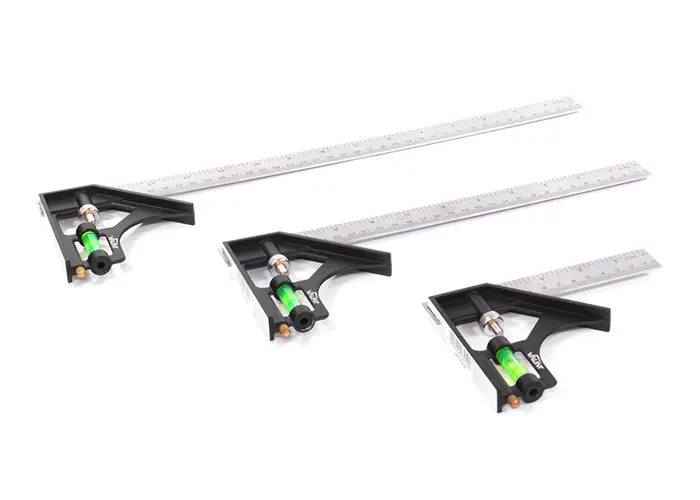
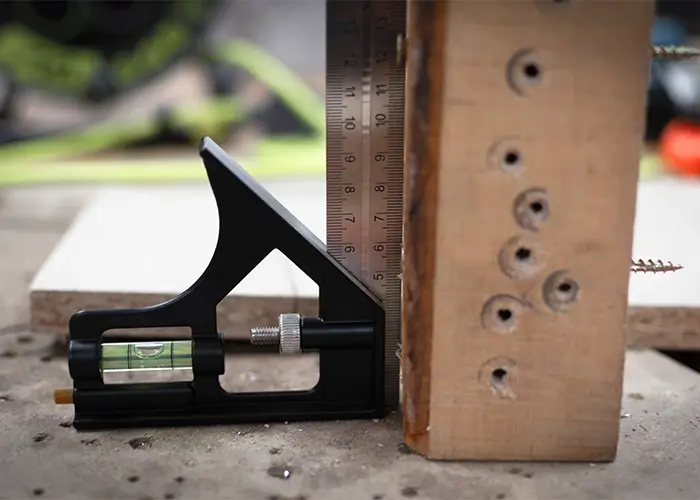
Positioning Parts
The end of the rule can be as handy as the edge. When you’re setting out project pieces that need to be a certain distance from the edge or even just parallel, the combination square has got you covered.
In Summary
A good quality combination square is much more than just a tool that gives you a 45° and a 90°. It can offer so many benefits to both the casual DIYer and the most seasoned woodworker with its pin point accuracy and ease of use that it definitely earns its keep in your tool box.
A good combination square is a precision tool and, with proper care, can last a tradesman for many years.

